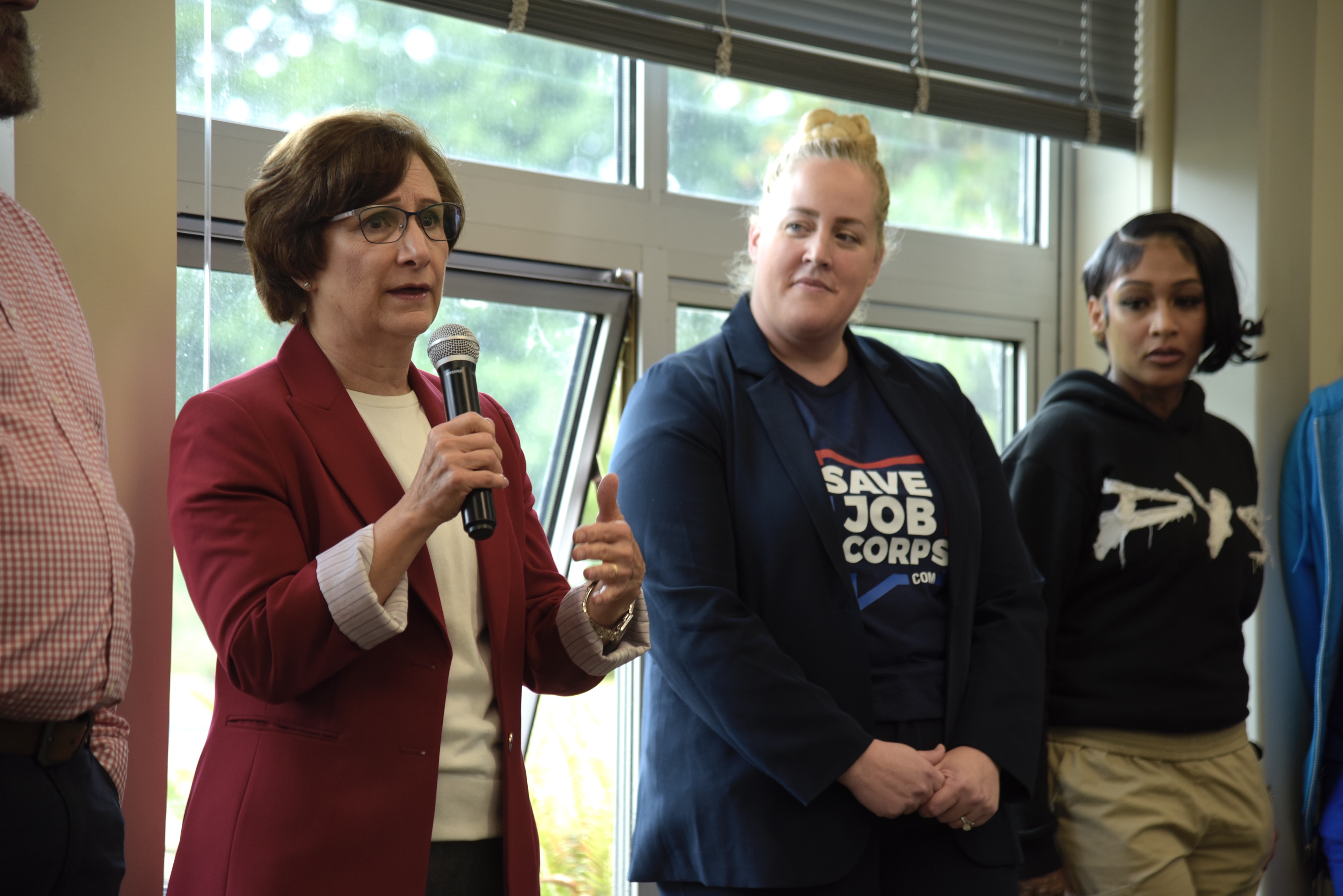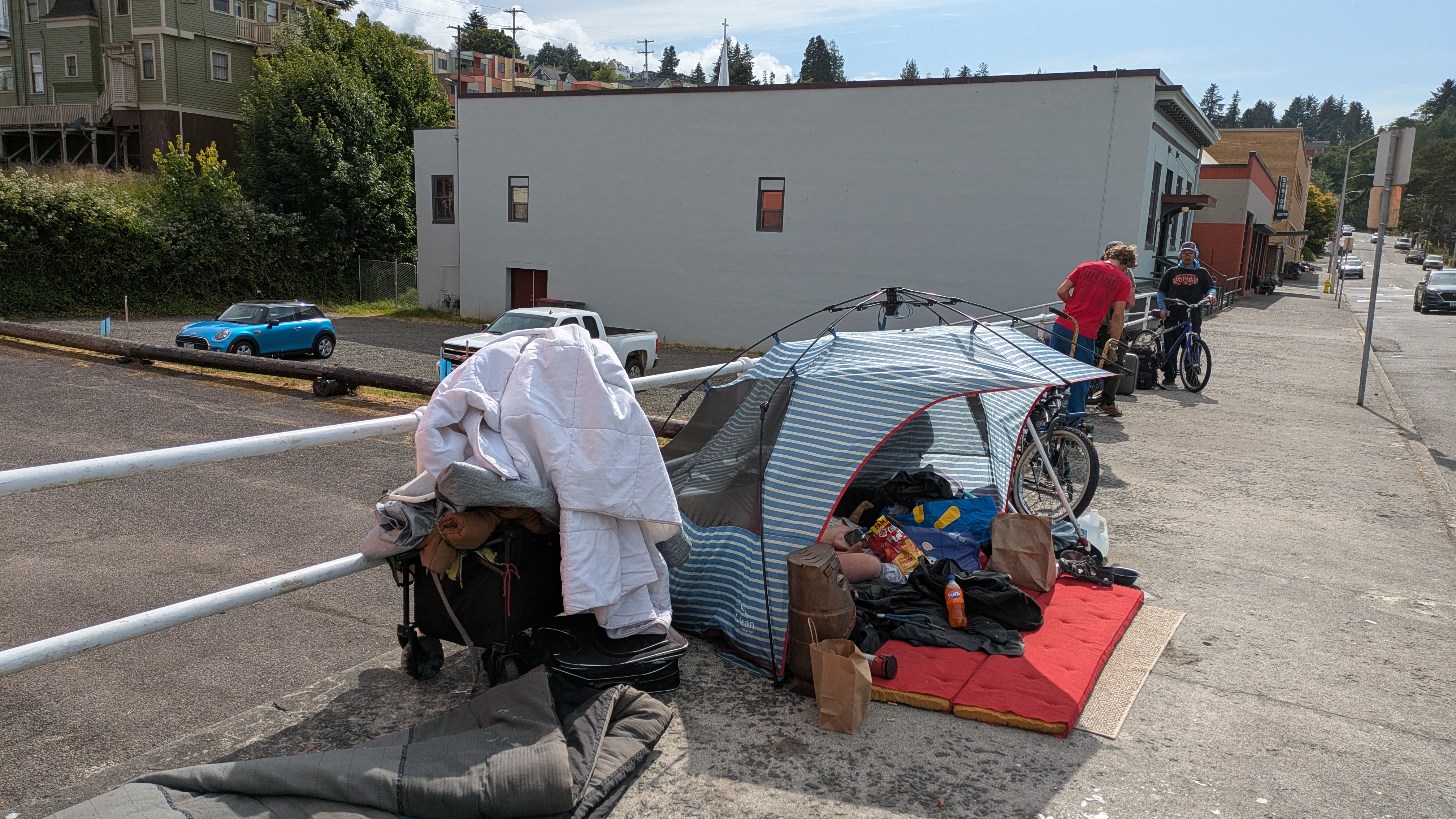Experiencing a real-life view of LNG
Published 5:00 pm Monday, March 12, 2007
Clicking through pictures on his computer screen, Columbia River Bar Pilot Capt. Robert Johnson detailed his ride on a liquefied natural gas tanker as it entered Boston Harbor, where the Distrigas LNG terminal has been operating since 1971.
“This is the Catalunya Spirit,” he said. “She’s 933 feet long with a 140-foot beam and 130,000 cubic meters of storage – very similar to what we’d be getting here. We passed some small boats. They were not allowed to get too close but they did go by. We went by this tug and barge – and that’s downtown Boston.”
Johnson was one of three pilots who traveled from Oregon to Boston in October to gain some firsthand knowledge of navigating an LNG tanker through a busy waterway. He was joined by Columbia River Pilot Capt. Paul Amos and Foss Maritime tugboat Capt. Mike Walker.
Together, the three men represent the piloting expertise that would be needed to take an LNG ship across the Columbia River Bar and 38 miles upriver to the proposed Bradwood Landing LNG receiving terminal if the project is approved.
The pilots have been doing their homework on LNG, collecting data on the various models of LNG tankers, researching tools that would make for the safest possible passage up the river, participating in computerized training sessions that simulate the piloting experience, and visiting facilities on the East Coast.
During the trip to Boston, Johnson said it became clear to him that LNG wouldn’t “shut the river down,” as some in the region had feared. He offered dozens of pictures as proof of just how “routine” LNG transits are in bustling Boston Harbor.
“There were all these boats there, and we just steamed on through,” he said. “There were some that were sailing. There was a regatta going on at one point. There were passenger ships; we went right by them. Then there’s the airplane going by. We went under a bridge. … We had 11 feet of clearance, and it didn’t stop traffic.”
There are navigational differences between Boston Harbor and the Columbia River, said Johnson. The width of the channel and the degree of difficulty in crossing the Columbia River bar pose unique challenges here, he said.
Pilots’ expertise neededThe pilots are among the first people LNG development companies consult on river traffic and navigation issues, said Johnson, and they have shared concerns about safety and the effects on existing river commerce. While LNG offers an opportunity for increased income to the Columbia River Pilots Association, it also poses new hazards and significant changes to the pilots’ operations.
The recently released U.S. Coast Guard Waterway Suitability Report for Northern Star Natural Gas Co.’s Bradwood Landing project has drawn attention to the changes that would be needed for the Columbia River to accommodate LNG tankers. The potential safety hazards involved in transporting LNG trigger an extensive review of navigation security before the Federal Energy Regulatory Commission considers approving a new terminal.
Five companies are looking to site LNG terminals in Oregon. Four proposals are on the Columbia River, and a fifth is at Coos Bay. The Bradwood Landing project, located 20 miles east of Astoria, is the farthest along in the federal approval process. LNG terminals receive supercooled natural gas liquid and turn it back to a vapor for pipeline distribution.
Bar and river pilots are among the key players that will draw up the Coast Guard’s required Transit Management Plan, a detailed system of organizing all traffic on the river to make way for 125 LNG tankers expected each year at the Bradwood Landing facility. The pilots agree the LNG tankers aren’t that different in size from the container ships they maneuver through the river on a regular basis, but the security measures required add some complications.
Amos, who would be among the river pilots taking LNG tankers from the bar to the Bradwood Landing facility at river mile 38, said he suggested a priority system for deciding which ships were allowed to enter the river first. Some ships have deeper drafts than others and must cross the bar at high tide.
“My idea is ships that have a narrow window for high tide – grain ships, container ships – they get the first shot at it,” he said. “The second priority should be ships on a schedule, regardless of draft. Third would be the LNG tankers.”
Nailing down all the details before the ships set sail is an essential step to preparing the river for LNG, he said.
“I’ve told the companies they need to be flexible in their ability to accommodate arrivals and departures,” said Amos. “My primary concern is maintaining the flow of traffic so existing businesses aren’t put out, and so they don’t incur any additional expense.”
Tugs ensure controlWalker said he has piloted Foss Maritime tugboats as they were escorting oil tankers about the size of LNG tankers, and has the experience to pilot the LNG escort tugs required by the Coast Guard WSR. However, a formal request for proposal will determine which company provides the escort piloting service. He is learning what he can about LNG in case Foss Maritime is hired.
“The people who would operate our tugs are local captains with many years of experience,” he said. “It’s absolutely imperative we do the due diligence involved with LNG transits. If this comes about, it has to be done safely.”
Working on Bradwood Landing’s LNG tankers as they made their way up and back down the river would expand Foss’ business, but there would be extra planning and training involved in the job. Tug boat pilots have participated in simulator training with river and bar pilots to coordinate navigation efforts among the different vessels.
The escort tugs would be essential to ensuring control over the tankers as soon as they make it across the bar, said Walker. At least one of the tugs would be tethered to the ship; in rough conditions, there could be two tied on.
“Should something go wrong, you’d already have hold of the ship and be able to do something to correct the problem,” he said. “We do this all the time for tankers. They take the ship and effectively slow it down or turn it if there was a problem – the tugs are designed to do that.”
Specific requests grantedJohnson said the pilots specifically asked for two bar pilots and two river pilots to ride on each tanker to make sure the conning pilot, the one at the helm, could focus exclusively on navigation. The second pilot would communicate with the Coast Guard officials and handle security issues – at least for the first six months the tankers are on the river.
Another request the pilots made was for a Dynamic Under Keel Clearance System, a sophisticated modeling tool that tells pilots exactly how much space lies between the hull of the ship and the bottom of the river.
“This is another tool that will make us more accurate in our assessment of safety and our risk management,” he said. “The most important thing is the safety. We will be safer in maneuvering all ships that get closer to the bottom.”
The basic risks of navigating LNG tankers are the same as they are in other ships, said Johnson. Collisions and grounding are the two biggest concerns. When LNG vaporizes, it can catch fire and produce a lot of heat, which heightens the risk associated with any loss of control.
Northern Star will be responsible for sharing the cost of developing the Under Keel Clearance System, which Johnson said will be a benefit to the entire river.
“It could have a huge amount of impact. The economic benefit is that we should be able to allow all ships to load deeper,” he said. That would make the Columbia River more attractive to the shipping industry. “We have been onto this for years now, and this is a way we’d be able to get it for the benefit of everybody.”





